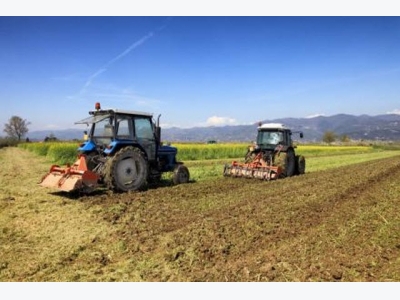Targeted action for biodiversity is also needed in organic agriculture

The researchers studied the effects of organic farming on species diversity at the field, farm and regional levels. (Photo: Microstock)
Organic farms without targeted measures to promote biodiversity, such as the creation of species-rich habitats, only harbour marginally more species than other farms.
Organic farming has long been known to be beneficial to the richness of plant and animal species. However, benefits concentrate on arable fields, according to some of the findings of the EU-funded research project BioBio.
An international team led by Agroscope in Switzerland investigated the contribution of organic farming to conserving farmland biodiversity. The results were recently published in Nature Communications.
Biodiversity indicators
The researchers have developed a set of biodiversity indicators. In order to measure them, all habitats of a farm were mapped according to a standardized protocol. On a randomly selected plot in each habitat per farm, all species of plants, earthworms, spiders and bees were sampled, and the farming activities are recorded.
The indicators allow for an efficient assessment of the status of biodiversity on a farm.
The researchers studied the effects of organic farming on species diversity at the field, farm and regional levels in 1470 fields of 205 randomly selected organic and nonorganic farms in twelve European and African regions.
Researchers were particularly interested in the farm scale, i.e. the question of whether organic farms harbour more species than their non-organic neighbours.
In Norway, grassland-based cattle farms in Hedmark County were studied: In each region, 12 to 20 farms were selected randomly, half of them certified organic for at least five years. No constraints were set on the other farms.
More species because of field boundaries
In general, more species of plants and bees were found on organic than on non-organic fields, but not more species of spiders and earthworms.
If species of field boundaries such as grass strips or hedges were included into the comparison, the difference between organic and non-organic decreases.
Overall, marginally more species were observed on organic than non-organic farms.
In contrast, there was little difference in grasslands or vineyards. Organic farming differently benefited the four taxonomic groups of plants, earthworms, spiders and bees, which were sampled as surrogates for the multitude of creatures living on farmland.
Lead author Manuel Schneider of Agroscope in Switzerland analysed the data.
“Obviously, most species found in fields on organic farms were found in the boundaries on the non-organic farms. There was little systematic difference in the total number of species on the farms,” Schneider explains.
The occurrence of rare or threatened species was not depending on organic farming.
Targeted promotion of biodiversity
The study shows that more than organic farming is needed to sustain farmland biodiversity, and the scientists recommend farmers to increase the number of habitats of their farms.
“Even if farmers work on individual parcels, they focus on their farm enterprise when making decisions. In the end, it is crucial what they create and elaborate on their entire farm,” states Wendy Fjellstad, biologist and Research Scientist at the Norwegian Forest and Landscape Institute, and partner in the project.
“Surprisingly, on average over all twelve regions, we did not find a higher number of different habitats on organic farms than on non-organic farms,” explains Fjellstad, who conducted the sampling of plants and animals at the farms in Nord-Østerdalen in Hedmark County in Norway.
“At the same time, habitat diversity is the key to species diversity. If these additional habitats are different to the rest of the farm, for example in the form of hedges in grassland farms or herbaceous strips in arable farms, they have a huge impact on the species richness of a farm,” Fjellstad concludes.
Có thể bạn quan tâm
Phần mềm

Phối trộn thức ăn chăn nuôi

Pha dung dịch thủy canh

Định mức cho tôm ăn

Phối trộn phân bón NPK

Xác định tỷ lệ tôm sống

Chuyển đổi đơn vị phân bón

Xác định công suất sục khí

Chuyển đổi đơn vị tôm

Tính diện tích nhà kính

Tính thể tích ao hồ



 Why we should use these bacteria in fertilizers
Why we should use these bacteria in fertilizers  Agricultural exports flourish in first months of 2018
Agricultural exports flourish in first months of 2018